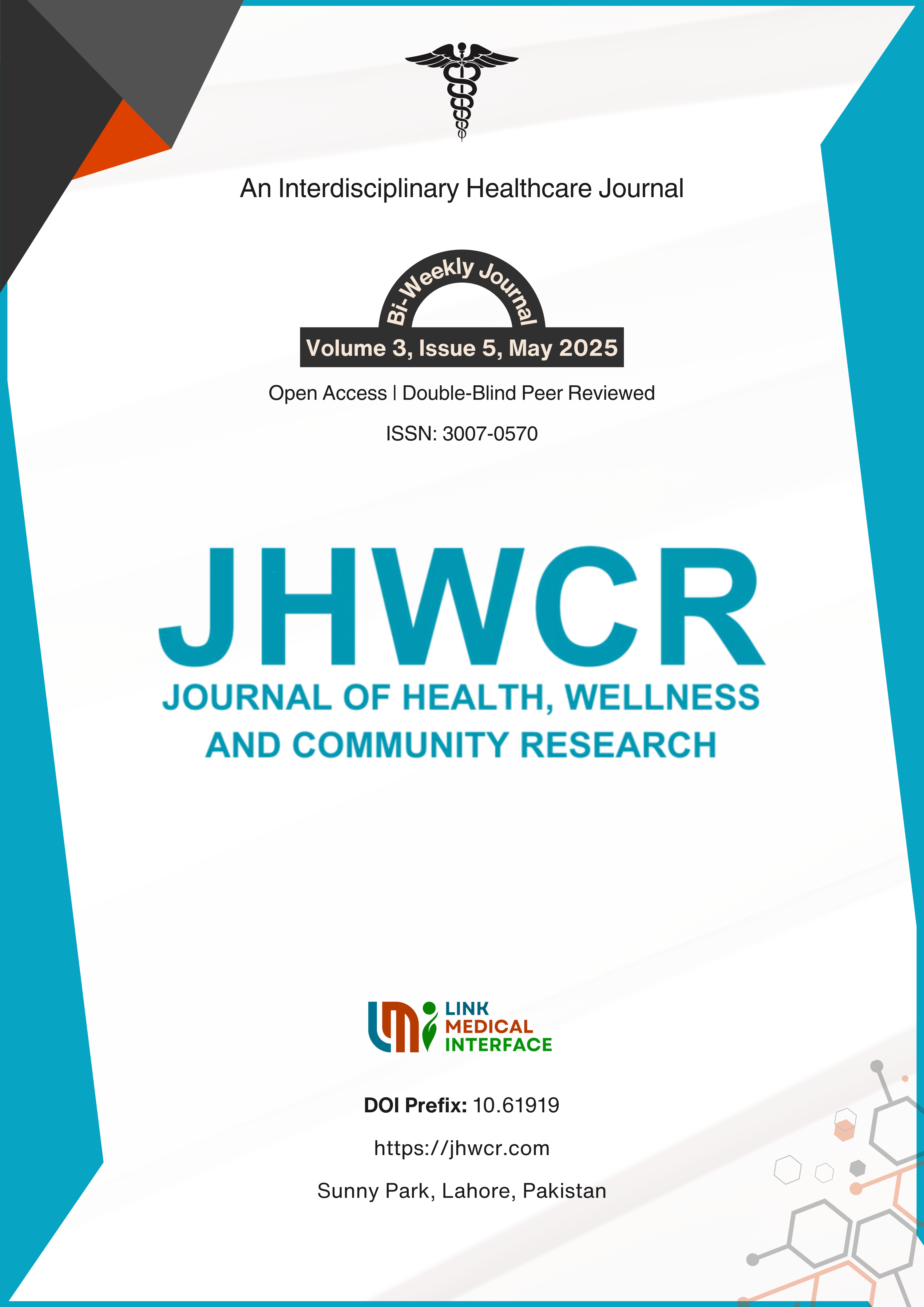Physical Activity and Glycemic Control in Type 2 Diabetes Mellitus: A Cross Sectional Survey
DOI:
https://doi.org/10.61919/Keywords:
Type 2 Diabetes Mellitus, Glycemic Control, Physical Activity, HbA1c, Fasting Blood Glucose, Postprandial Blood Glucose, Diabetes Management, Insulin Sensitivity, Lifestyle InterventionsAbstract
Background: Type 2 diabetes mellitus (T2DM) is a chronic metabolic disorder characterized by insulin resistance and impaired insulin secretion, leading to persistent hyperglycemia. Effective management of T2DM is critical to prevent complications such as cardiovascular disease, neuropathy, nephropathy, and retinopathy. Among various lifestyle interventions, physical activity has been consistently identified as a key modifiable factor that can significantly influence glycemic control. Objective: This study aimed to investigate the relationship between physical activity and glycemic control in patients with T2DM. Methods: This cross-sectional survey included 110 patients with T2DM, recruited from a tertiary care hospital. Participants aged 18 years and older were eligible for inclusion. Data were collected using a structured questionnaire administered during face-to-face interviews. The questionnaire gathered information on demographic characteristics, medical history, physical activity levels, and glycemic control parameters. Physical activity was assessed in terms of frequency, type, duration, and intensity. Glycemic control was evaluated using HbA1c levels, fasting blood glucose, and postprandial blood glucose levels. Statistical analysis was performed using SPSS version 25. Descriptive statistics summarized demographic and clinical characteristics. Linear regression analysis examined the association between physical activity levels and glycemic control parameters, adjusting for potential confounders. The significance threshold was set at p < 0.05. Results: The mean age of the participants was 51.2 years (SD = 12.3), with 72.73% being female and 79.09% married. The mean BMI was 27.64 (SD = 6.61). There was a significant inverse relationship between physical activity levels and HbA1c levels (p < 0.001). Participants who engaged in daily physical activity had the lowest mean HbA1c levels (6.45%, SD = 0.50), while those who rarely or never engaged in physical activity had the highest mean HbA1c levels (8.02%, SD = 1.00). Higher levels of physical activity were also associated with significantly lower fasting blood glucose (Daily: 100.5 mg/dL, SD = 10.2; Rarely/Never: 140.5 mg/dL, SD = 30.7, p < 0.001) and postprandial blood glucose levels (Daily: 135.5 mg/dL, SD = 20.5; Rarely/Never: 175.5 mg/dL, SD = 40.8, p < 0.001). Conclusion: The study demonstrated a significant association between physical activity and improved glycemic control in patients with T2DM. Regular physical activity, particularly when performed frequently and with higher intensity, was associated with lower HbA1c levels, fasting blood glucose levels, and postprandial blood glucose levels. These findings highlight the importance of physical activity as a critical component of diabetes management strategies.
Downloads
Published
Issue
Section
License
Copyright (c) 2024 Farhana Hafeez, Aqsa Riaz (Author)

This work is licensed under a Creative Commons Attribution 4.0 International License.


